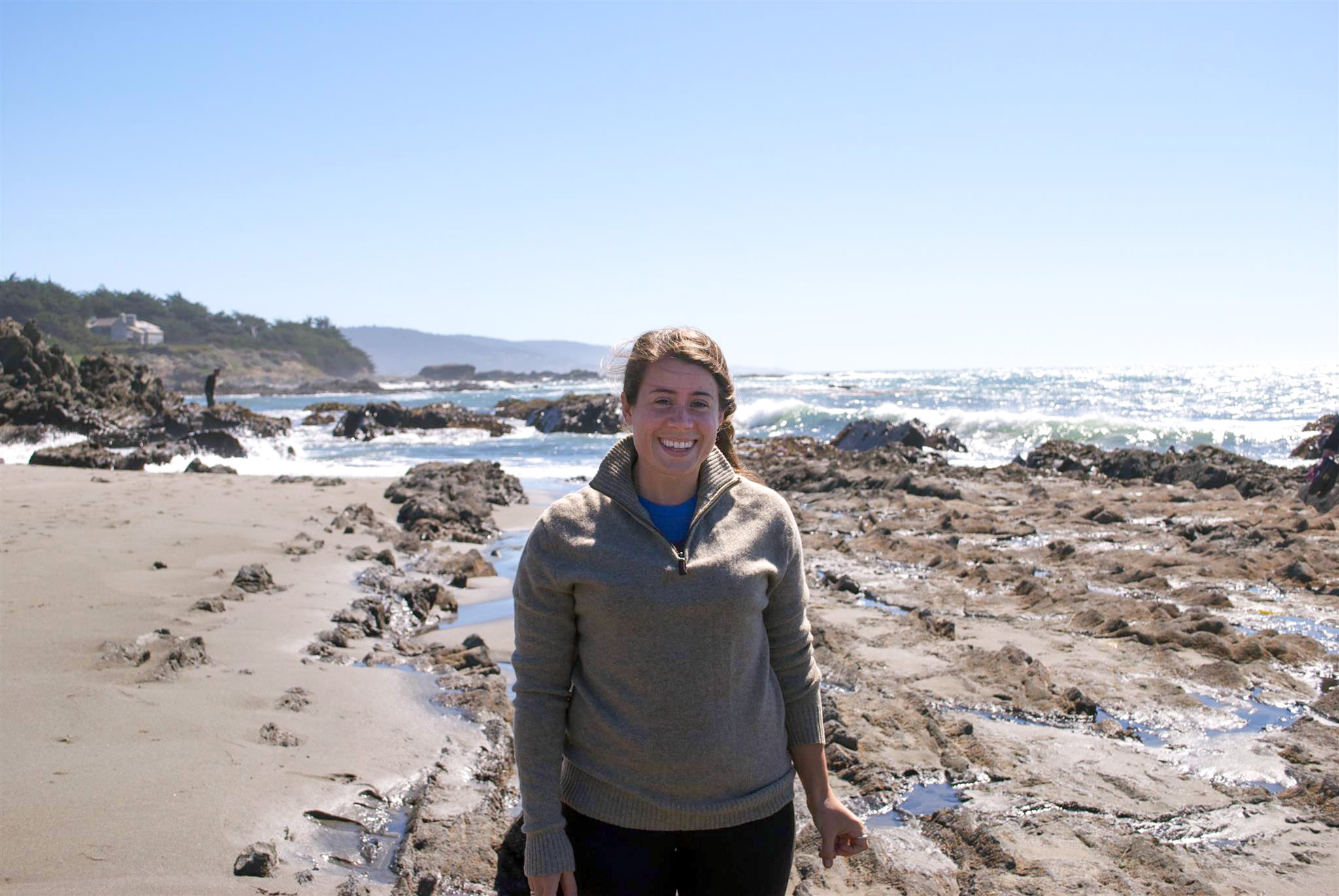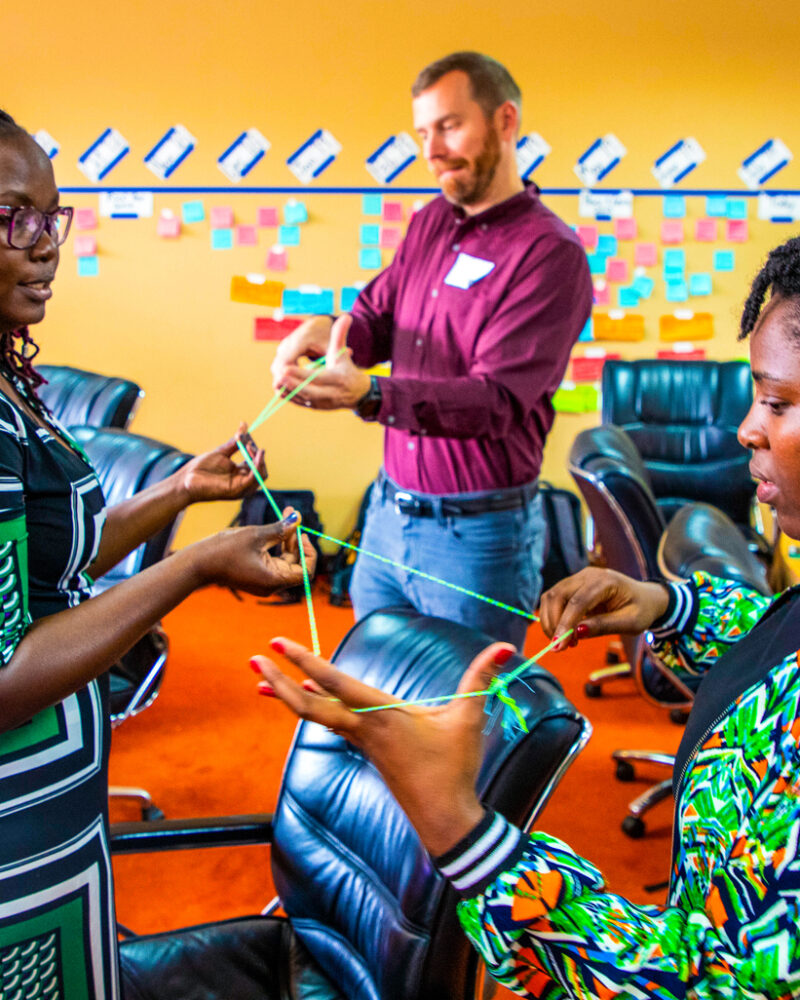We sat down for five minutes with Kelsey Schueler, a Senior Associate supporting Environmental Incentives’ International Practice. Kelsey tells us more about her role, what drew her into the environmental field, and the key trends she sees emerging in international development.
How would you describe your role?
I work primarily on the USAID Measuring Impact II (MI2) activity, which supports USAID thought leaders, mission staff, and Washington bureaus to apply evidence-based adaptive management across USAID’s biodiversity portfolio. As part of the capacity building team, I work directly with USAID missions and with other USAID staff in the field. My role is to coordinate and facilitate learning and quality control across all the team members working in the field, which currently includes 65 teams across 20 missions. We provide technical advice, deliver workshops, conduct hands-on training, and support evidence-based learning. I help coordinate this process and I also provide direct support in the field to teams in Latin America and the Caribbean. Being able to support USAID missions directly gives me a great opportunity to help develop tools and guidance documents that mission staff can use as they implement USAID’s Program Cycle. I’m fortunate to be able to help missions through the entire Program Cycle, including program design; monitoring, evaluation and learning; knowledge management; and collaborating, learning and adapting; among others.
What was your dream job growing up?
Both of my parents work in the conservation field. I grew up with an intrinsic appreciation for the environment and natural resources. When I was young, I was inspired by role models like Jane Goodall and imagined that I would work in the field doing science and conservation, perhaps as a marine biologist. As I grew older, I realized that a lot of people don’t have the same background or values as I do. As a result, I grew more interested in studying the social side of conservation and the idea that we care about nature because of people.
What drew you to work at Environmental Incentives initially?
I was eager to have the experience of working in a small business and all of the learning that goes along with that. Being a part of a small, nimble team allows for many interesting opportunities to expand your skillset. I also really enjoy the opportunity to get to know colleagues well and to be part of an environment that can change and adapt quickly.
I was also interested in Environmental Incentives’ focus on adaptive management and performance and applying that approach to conservation. Environmental Incentives works at the intersection of science, policy, and human drivers, which is really interesting to me.
What is your favorite part about working for Environmental Incentives?
I love working with our USAID clients in the Office of Forestry and Biodiversity. Through MI2, there is also a buy-in mechanism that allows missions and other USAID bureaus to request our assistance, so we now have clients that we work with directly in the field as well. I really like being able to interact with such an interesting mix of international development folks on a wide range of biodiversity projects. It is really rewarding to see the appetite for innovation, learning, and adaptive management from our clients.
I also love that as a company, we practice what we preach. We incorporate a lot of the tools and processes that we use with our clients into our own internal management. I think this helps build empathy with folks in the field when they know that we trust and rely on these same processes that we are teaching them.
What trends do you see emerging in international development?
There are many promising trends emerging right now. For one, there is a renewed focus on locally based solutions, catalyzed by USAID’s focus on the journey to self-reliance. We are seeing this change in how the Agency is restructuring to be more field oriented. Through this, we are starting to explore questions such as: How do we implement sustainable solutions that will last once a project is over? What does it really mean to work locally? How do we translate learning and evidence from one community to another? It is going to take a lot of work to do this well, but I see it as a very promising and important transition.
Another trend is increased engagement with the private sector. In the conservation community, where we are trying to tackle big challenges and grapple with the need for a large amount of financing, the private sector is such an important leverage point. There is a large focus within international development on partnering with the private sector, understanding how to do it well, and determining what success looks like. I believe it is a critical part of scaling solutions and is increasingly becoming a larger piece of the conservation and development puzzle.
There is also a big focus on learning. We are starting to move beyond traditional monitoring, evaluation, and learning that was focused primarily on indicators and quantitative data into more qualitative approaches such as peer-to-peer learning and communities of practice. These are often less resource intensive learning practices that help us make sure that we aren’t repeating mistakes of the past.
Finally, the integration of environmental programming with other development sectors is becoming even more important. Being able to speak to how the environment affects health, security, disaster risk reduction, sanitation and hygiene, etc., is really exciting (and challenging). We must learn how to advance this integration in a meaningful way to achieve better development outcomes.
What is your proudest moment at Environmental Incentives?
I think it is the moment we are in right now in the MI2 project. We have gone through a massive scaling up of the field support we are providing; we are now out in the field two or three times as much as before. What makes me most excited about this are the mission buy-ins. We supported many of these groups previously through Measuring Impact (MI) and now teams are coming to us directly and putting their own money on the table. It’s exciting to see that the demand for the tools, guidance, and approaches that we supported during MI has increased under MI2. We have ramped up quickly and we are learning a lot along the way—I love seeing how broad and deep our reach is now compared to just last year.
Another aspect I am proud of is the progress we have made in our knowledge management systems. Because we generate so many technical products and work in so many contexts, there is a great deal of data that we need to capture on a daily basis. I have worked over the past couple of years to develop systems that enable us to draw on past experience and look across our broad portfolio of support. It’s exciting to see those tools in action helping our teams adapt quickly to new contexts.
If you could learn to do anything, what would it be?
I would love to learn more about programming, data analytics, and bringing technological innovations into the environment sector. It’s inspiring to see the next generation of conservation planners already being able to do this and to imagine how big data will change the way we work in the coming years. I’d love to learn to speak that language.
What are your favorite hobbies?
I’m a very visual person. I really love art, whether it’s painting, drawing, or photography. I also enjoy talking to people about art—it’s so interesting to look at a piece of art with a group of people because everyone has a different reaction. I love seeing how people can communicate visually.
Gardening is also very meditative for me. I don’t have the patience for veggies, but I do grow native plants and flowers, usually whatever I can borrow from my mom’s garden!
If you were an animal, what would you be?
I am very envious of a cat’s life. My husband and I got two kittens last year and they get to lay around all day, bask in the sun, and get entertained by a piece of string.
What is one food you can’t live without?
Chocolate. I have a terrible sweet tooth.
What is your favorite thing to do in Washington, DC?
I love going out to restaurants, there is always something new to try. I also love going to the museums. It’s amazing to be in the center of it all in DC. It easy to forget about when I drive by it or see it every day, but when we have visitors come to town it’s my favorite thing to do.
I also recently moved to Anacostia, and there is a ton of green space, waterfront activities, and botanic gardens to explore. I love being reminded that DC is bounded by beautiful rivers and that there is a lot of nature at our fingertips.
What is your biggest achievement to date?
Moving to Environmental Incentives was a big change for me coming from a very large organization. Over the last two years I have really found my feet and I feel like I now understand both our clients and the organization really well. I love the challenge of learning a new institution and its drivers, and I now feel well-equipped and confident in my understanding of Environmental Incentives and the international development system that I am operating in.
—
We hope you enjoyed getting to know Kelsey! Stay tuned for more employee spotlights coming soon.



